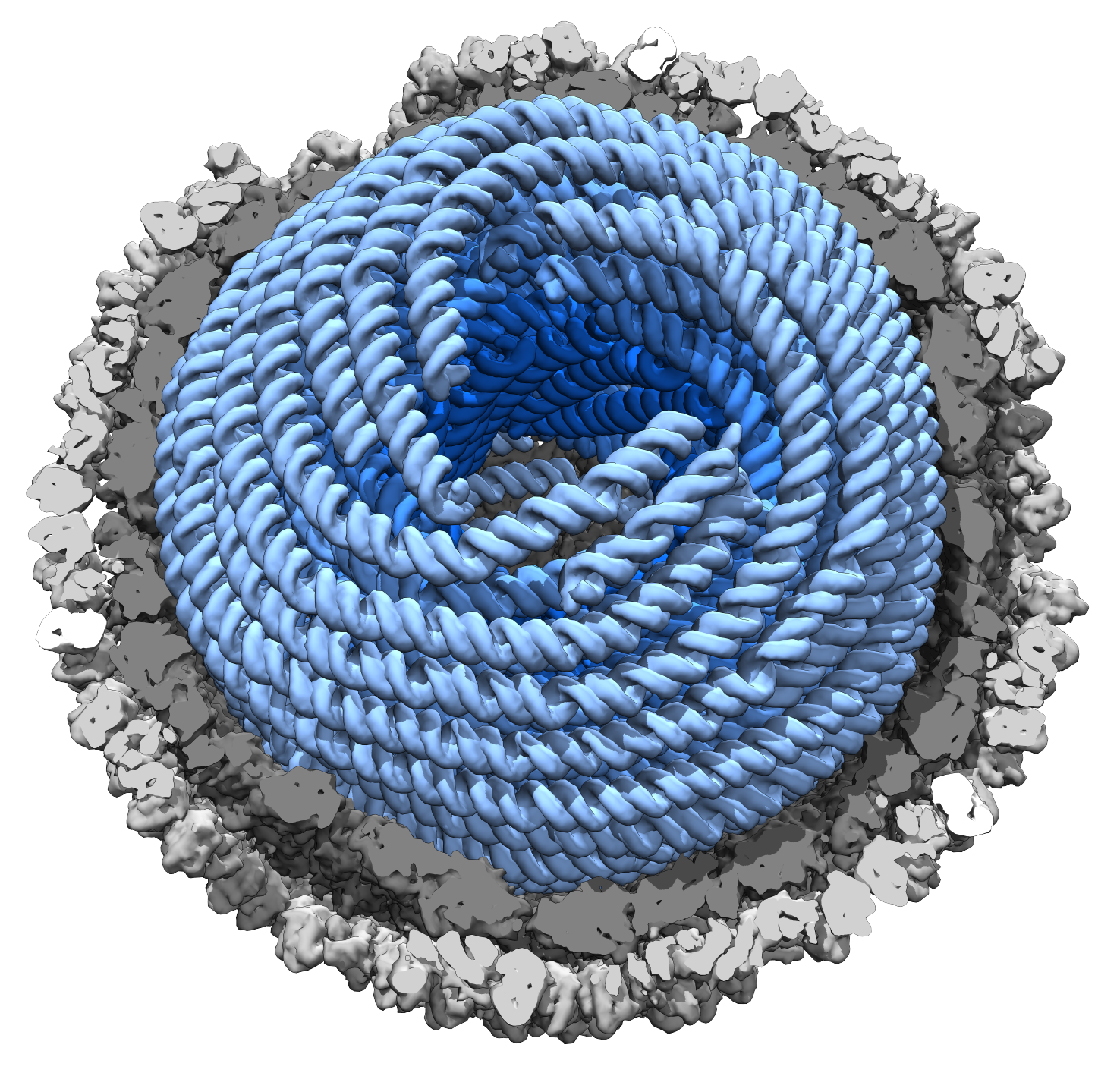21-Oct-2019
Double-stranded (ds)RNA viruses are a large and diverse group of viruses that infect a range of hosts, including animals, plants, fungi, and bacteria. Members of the dsRNA viruses include rotaviruses (a common cause of gastroenteritis), bluetongue virus (an acute disease of ruminants), and the rice dwarf virus (responsible for disease in major crop species, such as wheat and rice). Since dsRNA viruses are associated with a number of deadly and economically damaging diseases, there is huge incentive to determine the structure and assembly of the virus particles. Such information could prove invaluable in the development of antiviral therapies against dsRNA viruses.
A collaboration between scientists of Instruct-UK and recent Instruct member country, Finland, has yielded new detail of the genome structure of dsRNA bacteriophage Φ6, a virus of the Cystoviridae family. Undertaking cryo-EM at the eBIC facility, the team resolved the structure of the Φ6 virus in unprecedented detail, revealing similarities in genome packing with dsDNA viruses.
The scientists determined the structure of the double-shelled capsid to a resolution of 3.5 Å, confirming that the outer-shell comprises 200 trimers of protein P8, whilst the inner-shell is formed of 60 asymmetric P1A-P1B dimers. Cryo-EM also revealed the near-D3 (dihedral group) symmetry of the double-helical, supercoiled dsRNA, which is spooled in five layers, each having a different liquid-crystalline packing geometry. Whilst layers 1-4 are organised as near-coaxial spools, the innermost, fifth layer forms a barrel-like assembly. It is proposed that this unusual packing arrangement avoids extreme curvature in the dsRNA at the centre of the viral capsid, and optimises genome packing for transcription.

The structure of the ɸ6 nucleocapsid (grey) with viral dsRNA genome (blue).
The team also found that the Φ6 RNA-dependent RNA polymerases (RdRP), which catalyse the replication of viral RNA, become detached from the inner-shell of the capsid as it expands during genome packaging and replication. The displacement of RdRPs is implicated in the activation of the virus particles for transcription.
The cryo-EM studies provide crucial detail of the packing of dsRNA inside viral capsids and represent a key step towards understanding how packing enables genome transcription. Such information may be invaluable for the development of antivirals and may be exploited in novel gene therapies to deliver foreign DNA into target cells, exploiting dsRNA virus’s ability to infect a range of cell types.
Find out more about the cryo-EM facilities that are accessible through Instruct-ERIC.